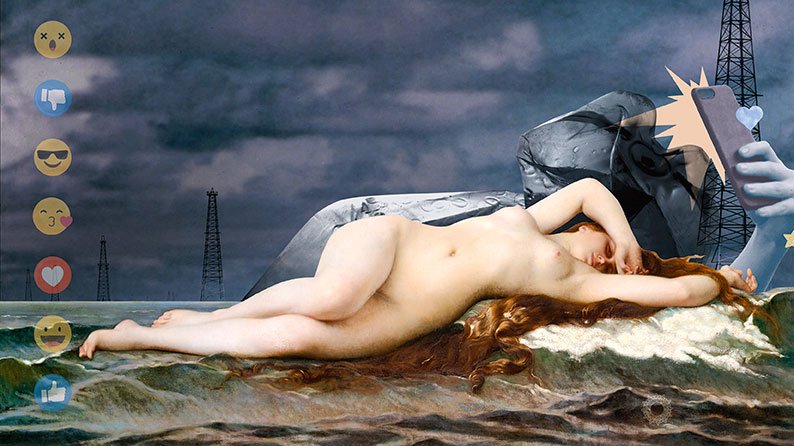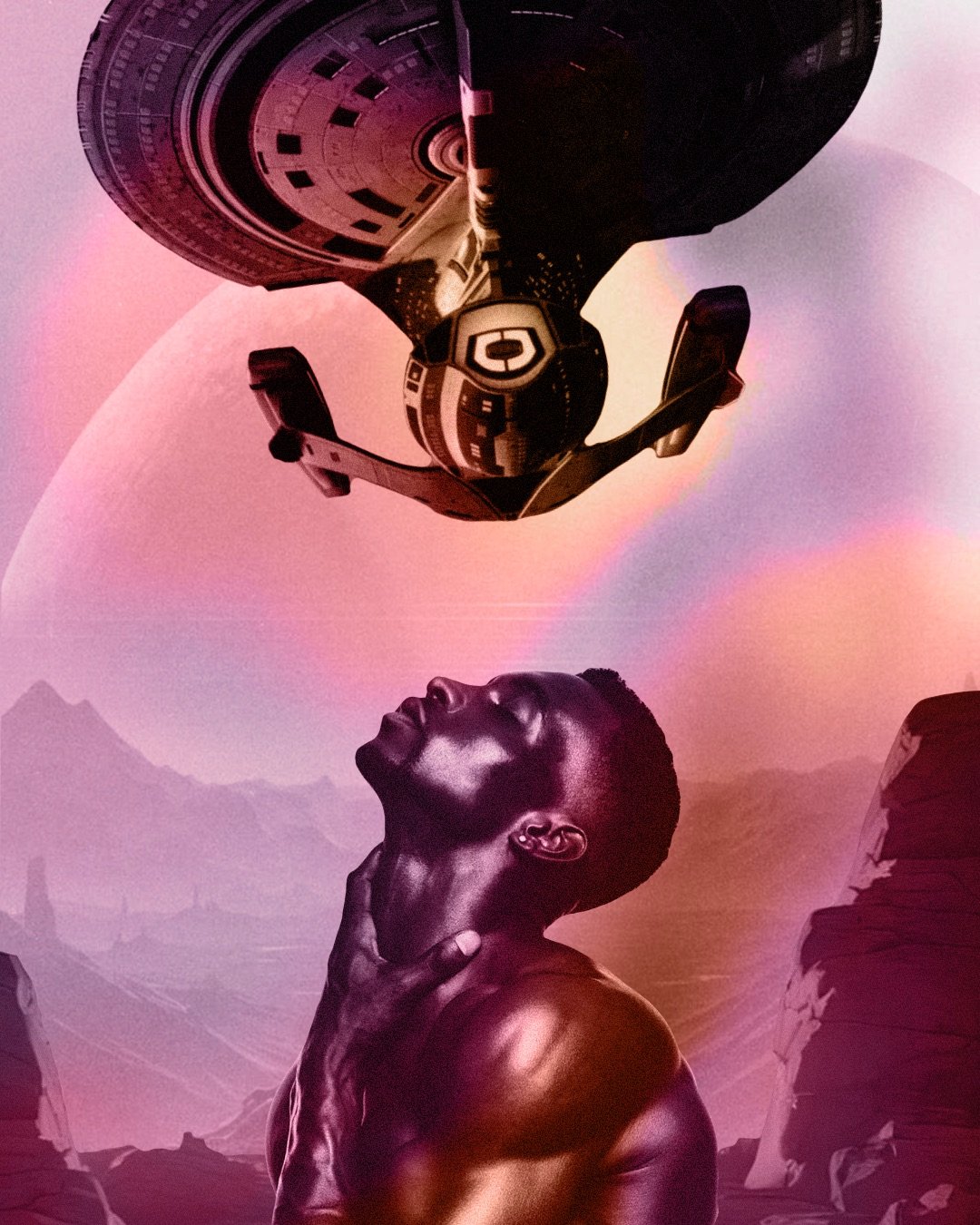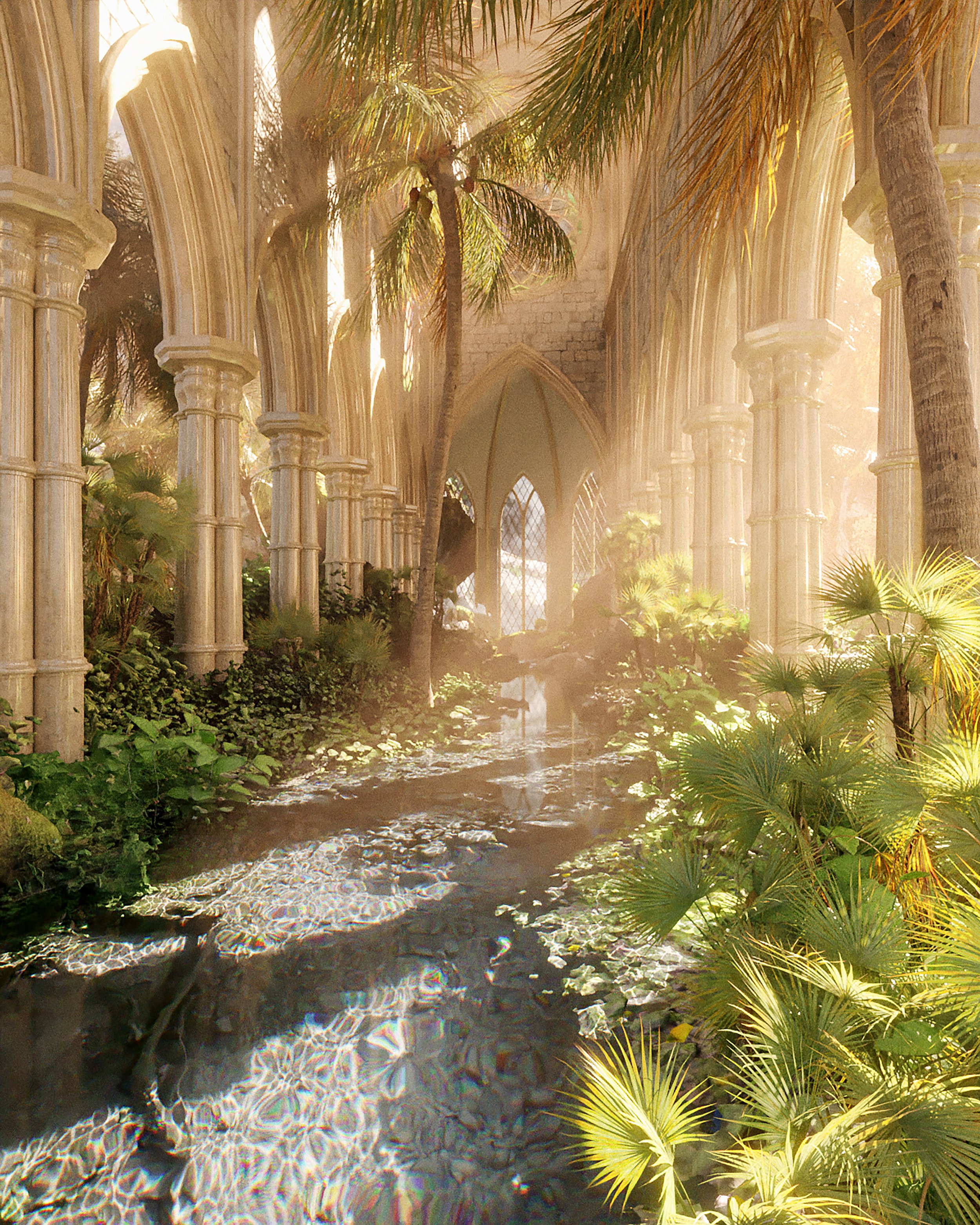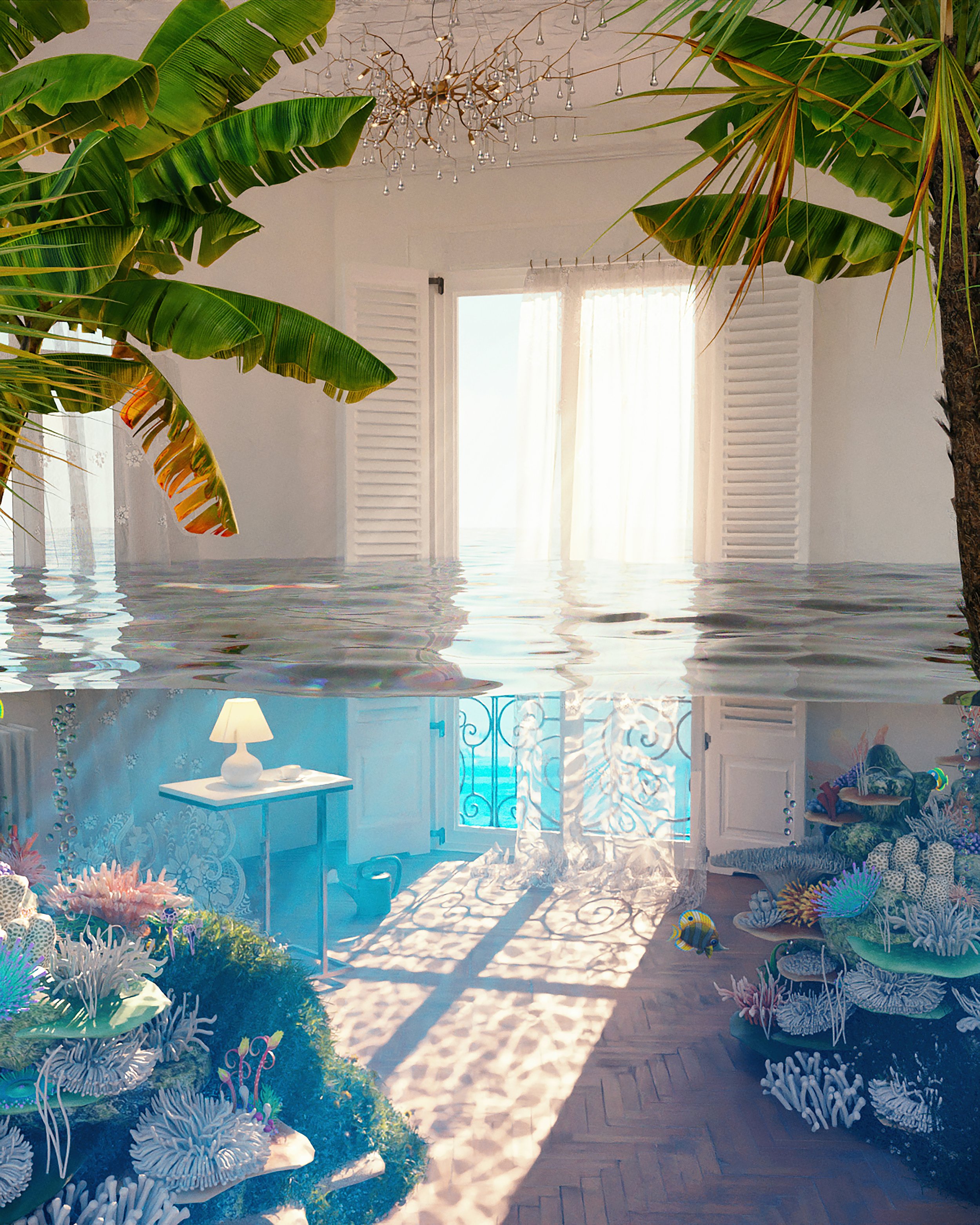Digital Art Will Change the Future
Christopher Jeauhn Bayne, Evolution of Eden, digital collage
Our world as we know it has been changing at an exponential rate since the beginning stages of the internet. First we could read information from the web, then we could interact with it, and then we could add to the dialogue by interacting personally with the web and the world at large. Creatively, the scope of our reality has shifted as well. We are shifting from a physical to a digital world and have been for decades. Since that first Atari joystick was held in your hand, or the first Star Wars movie was made. Digital art and physical art exist together in such advanced capacities today, but they do differ in several ways from the beginning stages of the creative process to the way they are viewed. Key differences between our definitions of physical and digital can be talked about when we think of key ways they are made and in the ways humans experience them.
Tools and materials needed for each kind of art have different requirements. Physical art often requires traditional materials such as canvas, paint, and brushes, while digital art requires software programs and a digital tablet or computer. The tools used in physical art are often physical and tangible, while the tools used in digital art are virtual and intangible. Our process for making art has changed. In physical art, the artist creates the work by hand, using the materials to create textures, colors, and shapes. In digital art, the artist uses software to create the work, often using digital brushes, layers, and filters to achieve the desired effect. The process of creating physical art is often more tactile and hands-on, while digital art requires a high level of technical skill and digital literacy.
Editing, revision and versioning are no longer restricted. In physical art, revisions to the work often require starting over or making significant changes to the existing work. In digital art, revisions can be made easily and quickly, with the ability to undo mistakes or make changes with just a few clicks. This allows for a more fluid and iterative creative process in digital art. One of the biggest and most revolutionary differences is the reproduction and distribution of art. Physical art is often limited in its ability to be reproduced and distributed by originals and print, as each piece must be created individually and distributed in physical print versions. Digital art, on the other hand, can be easily reproduced, distributed and transactionally recorded, making it more accessible to a wider audience.
Digital Art: Josh Croke
Overall, the beginning stages of creating digital art require a different set of tools, processes, and skills compared to physical art. While both types of art have their own unique challenges and benefits, digital art has the advantage of being more versatile and accessible in the modern digital age. Digital art has already had a profound impact on our culture, and the forecast for the future is even more exciting. Some potential ways that digital art could change our culture should be kept in the minds of all forward-thinking creatives. The future is unknown and boundless. Accessibility is one of the most exciting aspects of digital art is that it has the potential to make art more accessible to a wider audience. Unlike traditional art forms, digital art can be easily shared online and viewed by people all over the world. This means that people who may not have had the opportunity to experience art in person can now access it from anywhere with an internet connection. We already see how community and collaborative art making will be powerful. With the rise of digital art, we're seeing more and more collaborations between artists. Digital art allows artists from different parts of the world to work together on a single piece of art, breaking down geographical barriers and creating unique collaborations that would not have been possible before.
Interactive art and the experience of immersive art and design have already begun. Gaming and virtual reality are common among early adopters and tech-savvy people that ride the fast train. Digital art has the potential to be more interactive than traditional art forms. For example, digital art installations can be programmed to respond to the movements of the people in the space, creating a unique and immersive experience for the viewer. New mediums are being developed daily. Digital art has opened up a whole new world of creative possibilities. Artists can now create art using code, virtual reality, augmented reality, and other new mediums that were not available before. Many movies made today are examples of this like Avatar or The Matrix. Preservation and provenance will be prioritized. Digital artforms also offer new opportunities for preserving art. Unlike traditional physical art, which can deteriorate over time, digital art can be stored indefinitely and reproduced without losing quality. This means that important works of art can be preserved for future generations.
Overall, the forecast for digital art is exciting because it has the potential to make art more accessible, collaborative, interactive, and innovative. As digital technology continues to advance, we can expect to see even more exciting developments in the world of digital art.
Digital Art: James Tralie








